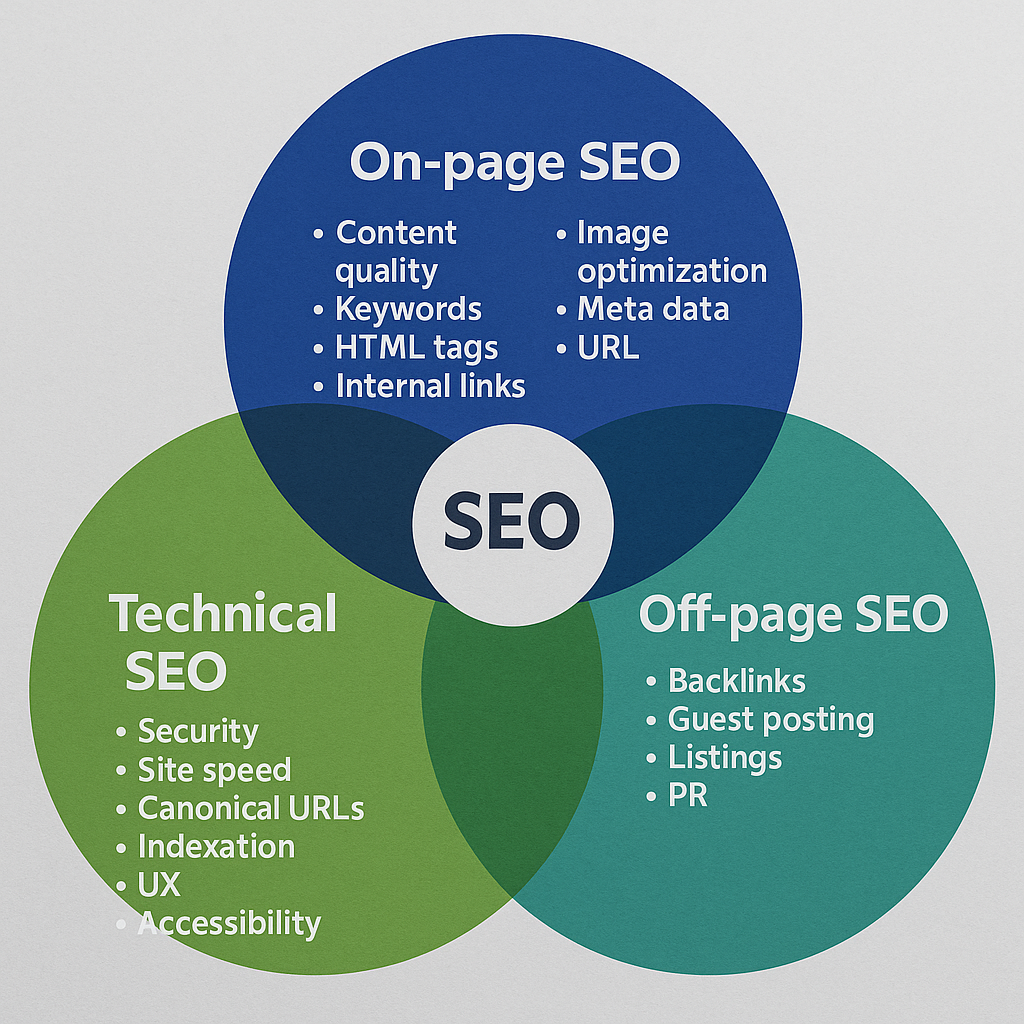Mastering Technical SEO: The Foundation of Visibility
Technical SEO, crawlability, site architecture, robots.txt, canonical tags
Introduction
Technical SEO is the backbone of search engine visibility. Without it, even the most well-written content might remain hidden from Google’s index. This post dives deep into the core aspects of technical SEO and shows you how to optimize your website for crawling, indexing, and overall accessibility.
What is Technical SEO?
Technical SEO refers to the process of optimizing your website’s infrastructure so search engine bots can efficiently crawl and index your content. It ensures that your site meets the technical requirements of modern search engines like Google and Bing.
Think of it as building the foundation of a house: no matter how beautiful the decor (content), the house (site) won’t stand without strong architecture.

Importance of Crawlability and Indexability
- Crawlability: Determines whether search engines can access the pages on your website. If bots can't crawl it, it won’t be indexed.
- Indexability: Refers to whether your pages are eligible to be added to a search engine’s index.

Tools like Google Search Console, Screaming Frog, and Ahrefs help you monitor crawl stats and identify crawl blocks.
Sitemap, Robots.txt, and Canonical Tags
- Sitemap.xml: Tells search engines where to find content. It’s your SEO map.
- Submit it via Google Search Console.
- Ensure it's regularly updated with new URLs.
- Robots.txt: Controls what search engines are allowed to crawl.
- Avoid accidentally blocking important sections.
- Use Disallow and Allow directives wisely.
- Canonical Tags:
- Prevent duplicate content issues.
- Help search engines understand which version of a page to index.
- Always point to the original or preferred URL.
Optimizing Site Architecture
Your website’s architecture should facilitate easy navigation for users and search engines. Best practices include:
- Flat Structure: Ensure all important pages are accessible within 3 clicks from the homepage.
- Internal Linking: Distribute link equity by connecting related pages.
- URL Structure: Keep URLs clean, consistent, and keyword-relevant.
Example:
https://example.com/seo/technical-seo-guide ✅
https://example.com/xyz?product=123&sort=true ❌
- Breadcrumbs Navigation: Enhances user experience and helps search engines understand page hierarchy.
Final Thoughts
Mastering technical SEO lays the groundwork for all your advanced efforts. It's not just for developers—marketers and content creators should also understand how crawlability, canonical tags, and proper architecture influence rankings.
In the next post, we’ll shift gears from backend optimization to frontend speed improvements.
if you have not read the introduction to advance seo please see the article below
⬅️ Previous: Introduction to Advanced SEO
stay tuned for the coming chapter:
➡️ Next: Page Speed Optimization





